Ballasts are the heavy, non-penetrating solution to installing solar, where installers use concrete blocks to mount arrays instead of making holes in rooftops or screwing into the ground. Ballasted arrays work well on flat rooftops and sites like brownfields, Superfunds and landfills where few to no penetrations are wanted.
The industry standard for solar installers is to use precast, pour-in-place or premanufactured concrete blocks to hold racking in place. However, there are some unique alternatives to traditional concrete, including using rocks and even batteries as extra weight.
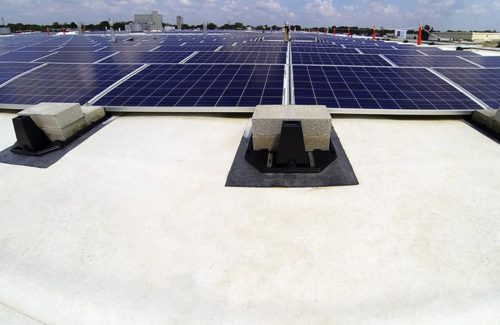
Ecolibrium Solar’s Eco Foot 2+ ballasted racking system uses a pan-like receptacle to contain any pieces that break off the concrete blocks they hold. Ecolibrium Solar
Concrete installations
Like land, no roof is made precisely flat. Rooftops are built with a slight grade so water can drain to avoiding settling, which could damage the structure. When installing solar on larger “flat” roof facilities, limiting penetrations is key to further prevent water damage from leaks.
Roof ballast racks are built for these types of projects. The low-to-the-floor, often single-module mounts used on rooftops with slopes between 1 and 3° can be installed without a single penetration by using proper weight distribution. If the roof is in the 4 to 7° range, some penetrations and attachments are likely required, and anything above that is considered sloped or pitched.
“The greatest limiting factor with a ballasted system is the structure of a building, and typically we have a structural engineer who analyzes the building and says what the structure can support,” said Chris Berg, project solutions manager at Ecolibrium Solar. “If the load limit of the roof is too low, we can do a hybrid system. It would be a combination of ballasts and a limited number of attachments, and the attachments can offset ballasts so that you get below your threshold of pounds-per-square-foot that the building can support.”
Precast or premanufactured concrete blocks are generally used on rooftop arrays. The average weight of a precast concrete block used in roof ballast projects is 32 lb. but can vary by what composites are used to make it, which can mean a loss or gain of a couple of pounds. While individually minuscule, the overall weight of a project will vary greatly with blocks lighter or heavier than average.
“Pour-in-place [blocks] are not really applicable to roofs because those are much higher point loads,” Berg said. “You end up usually exceeding the roof capacity, and so our system utilizes premanufactured blocks.”
Ecolibrium recommends installers seek out blocks made with freeze-resistant concrete that will absorb less moisture. The freeze-thaw cycle in regions prone to colder weather can result in broken ballast blocks and loose pieces of concrete on a rooftop. These concrete pebbles can damage a roof if stepped on, possibly voiding roof warranties. Ecolibrium’s roof ballast racks use pans that can catch loose granules of concrete in the event of a breakage. The other danger of breaking concrete is overall weight loss, risking array misalignment with high-wind exposure.
“Ground wind speeds are very different from a wind speed 80 ft. in the air,” Berg said. “Parapet height plays a role in that. You get turbulent winds, so the aerodynamics of the system are completely different from ground-mount, which is typically not a single row of modules.”
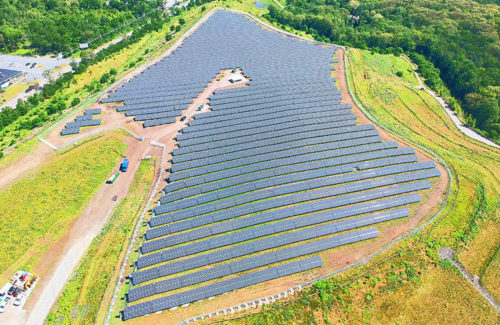
Solar FlexRack’s Series B Pre-cast solar mounts were deployed on the 3.8-MW solar array on the landfill in Shrewsbury, Massachusetts. The ballasted ground mount system required zero penetrations on the landfill site. Solar FlexRack
Using ballasts in ground-mount installations opens a new market of temperamental land types like landfills, Superfunds and brownfields.
“We are running out of flat land or reasonably flat land, so they’re good candidates,” said Steve Daniel, executive VP of Solar FlexRack. “[Brownfield projects] do cost a little bit more, but usually the town or municipality is very happy to have you do something with the land. It’s certainly better than chopping down a million trees.”
Capped landfills have a layer of plastic that prevents water and human contact with the waste below the ground, so it cannot be pierced. Other similar brownfield sites that contain contaminated soil from former industrial uses cannot be made fit for commercial use without undergoing extensive civil engineering.
Ground-mount ballasts can use all concrete block types for installation. The first step is determining how much weight a site can handle, including the weight of equipment. Installers must transport precast concrete blocks or pour them on site, and sometimes driving a 70,000-lb. cement truck on location isn’t possible.
The final decision on the best type of ballast for a specific site should be made by the installer. With cast-in-place concrete, installers can avoid shipping costs and having to physically move premanufactured blocks to each array. They can use a cement pump and fill basins to keep the racking in place.
As for premanufactured concrete, pavers can be purchased in bulk from home improvement stores or suppliers. Installers can hire unskilled laborers on these projects, because a lot of the job is simply placing concrete blocks on the foot of the racking.
Installing racking to a ground-mount ballast primarily follows the same steps as a ground screw or driven pile, but each manufacturer’s product can have slightly different requirements to adapt to ballasts.
Concrete alternatives
The industry standard for ballast weights has been precast or poured concrete blocks, but AP Alternatives, a mounting and racking specialist, has introduced an open option for ballasting. Its proprietary Geoballast Foundation introduces quarry rock to keep ground-mount solar secured. The Geoballast is a galvanized basket that can hold 2,200 to 2,400 lb. of weight — be it locally sourced quarry rock, concrete pavers or reused crushed concrete — in place of stacking traditional concrete blocks or pour-in-place.
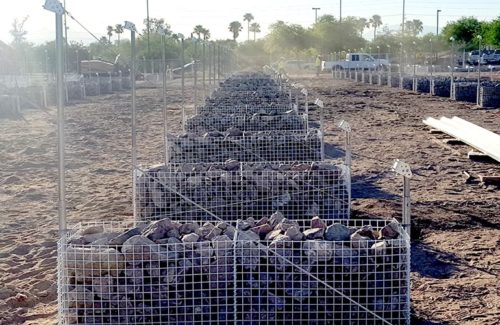
AP Alternatives developed a galvanized steel basket that can be used in ground mounts solar arrays in place of the traditional concrete ballasts. AP Alternatives
“We have a lot of people that see concrete as a pollutant itself. There are not great things to do once it sets up — after it’s a solid block — so a lot of people really like being able to use recycled concrete or recycled materials or simply not concrete with this system,” said Josh Von Deylen, CEO of APA. “This is basically a system that can be completely unassembled and recycled and reused, versus actually pouring new concrete in place.”
Von Deylen said quarry rock is extracted in enough places that it’s likely within proximity of a worksite. Mining companies have slag, or “junk rock,” that is cheaper than standard quarry rock and will work in Geoballast baskets. The rock can be dumped in a pile on a worksite and set in baskets with a skid steer.
“Rock is from every corner of the world, and wherever you pull the rock from it’s going to be native to that area. As far as freeze, thaw — it’s been underneath that ground right there way longer than we have been up here,” he said. “This is simply digging all-natural rock out of the ground and putting all-natural rock in a basket.”
The Geoballast is compatible exclusively with APA’s Advanced Modular and Ready Rack systems.
Another recently developed ballast solution integrates Yotta Solar’s SolarLEAF battery into PanelClaw’s racking system. The approximately 36-lb, 1-kWh lithium-ion battery is set in the center of the racking — not on the feet — where a panel will be installed atop it.
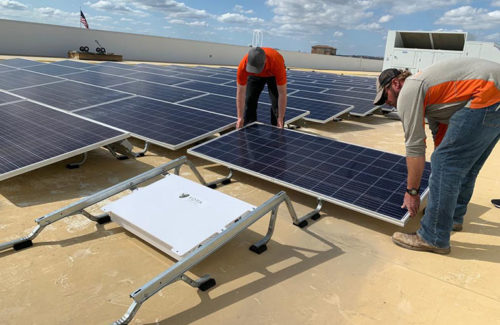
Yotta Solar and PanelClaw partnered on a roof ballast product that integrates panel-level storage. Yotta’s 36-lb. SolarLeaf can be installed in PanelClaw’s roof mount racking. Yotta Solar
“You can’t talk about solar anymore without talking about storage and one of the key innovations that need to happen is to make it simpler,” said Omeed Badkoobeh, CEO and co-founder of Yotta Solar. “Right now, there’s a lot of installers that are receiving demand for energy storage regionally in the markets that have incentives for energy storage, but there’s not quite an adequate system that they can easily design and quote in an effective manner.”
Instead of also incorporating ballast blocks into a system using the panel-level SolarLEAF battery, PanelClaw has redesigned its flat roof racks to use the battery’s weight to keep the solar array secure to the roof.
Whether it’s quarry rock, concrete or batteries, ballast manufacturers have the same goal of ensuring non-penetrative solar installations carry on with relative ease. Who knows what heavy objects will enter the ballast market next?


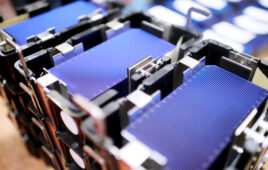


Tell Us What You Think!